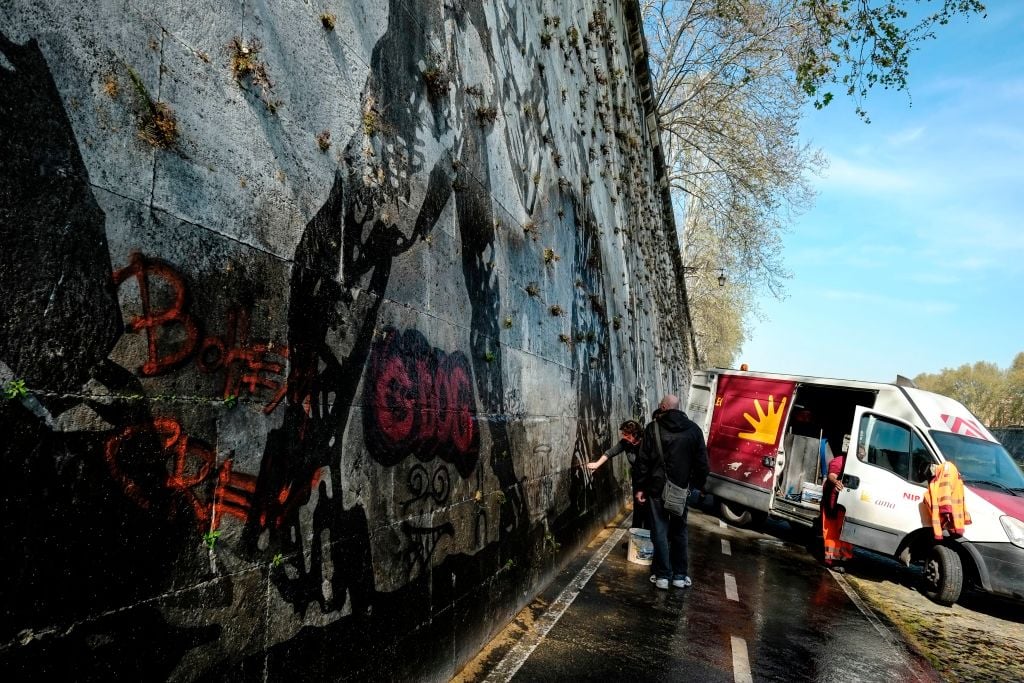
A large-scale frieze created by the South African artist William Kentridge on the bank of Rome’s River Tiber has been vandalized with graffiti.
Kentridge told AFP that he couldn’t understand why the authorities in Rome had not removed the graffiti as soon as they started to appear.
The mural—which depicts the history of Rome and is called Triumphs and Laments—was created by Kentridge by removing the dirt building up on the walls lining the Tiber, across 550 meters (1,800 feet), using a technique called “reverse stenciling.”
Located in on the right bank of the Tiber in the Trastevere district, close to St. Peter’s Basilica, the frieze was inaugurated in April 2016 and has since attracted widespread interest by tourists and locals.
A general view shows the Triumphs and Laments fresco, which was completed along the banks of Romes Tiber river less than a year ago by South African artist William Kentridge, on March 31, 2017 in Rome. Rome authorities are working to remove graffiti that vandalized the fresco. Photo ANDREAS SOLARO/AFP/Getty Images.
Yet, since its launch, graffiti—most of them simple “tags” featuring names and initials—have been consistently appearing in the blank spaces between the images outlined by the artist.
“Some graffiti artists do great work. I’m less interested in those who simply leave their initials on the wall,” Kentridge told La Repubblica last Friday.
“I know there are many people in Rome to whom this work is dear. Out of respect for them, I hope the city authorities will clean up the graffiti.”
William Kentridge in 2016. Photo Christian Marquardt/Getty Images.
It seems his plea has worked. According to AFP, that same day, Luca Bergamo, Rome’s deputy mayor, ordered a team from the city’s refuse department to clean the frieze and erase the graffiti, calling the vandals “stupid.”
Much like graffiti, however, Kentridge’s epic public artwork—which features iconic Roman imagery, from pre-historic times up to the current migrant crisis via Federico Fellini’s La Dolce Vita—is an ephemeral endeavor.
The artist has said that, in about four to five years, the images will fade, as pollution, dirt, and weeds slowly take over, returning the wall to its previous state.